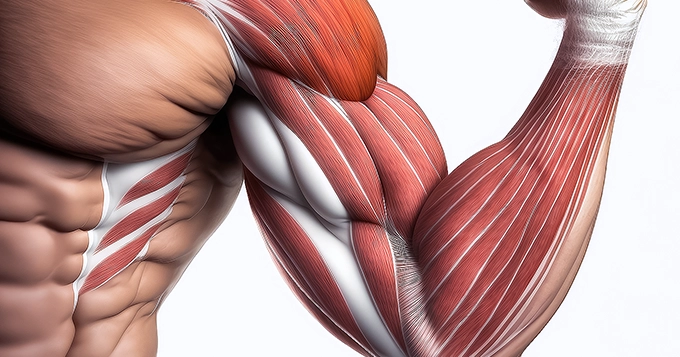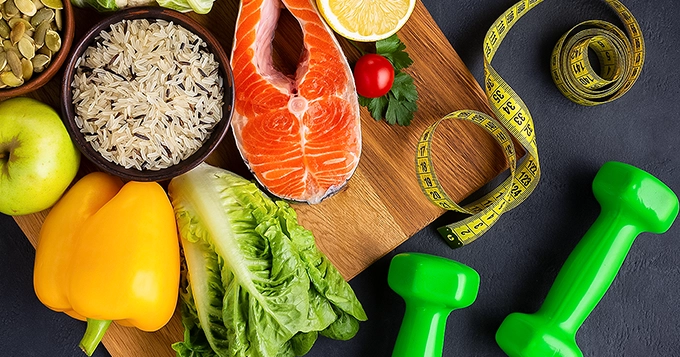
Key Takeaways
- Bulking involves eating more calories than your body burns, which helps build muscle mass and strength.
- Focus on eating complex carbs, lean proteins, and healthy fats to support muscle growth during bulking.
- Pair bulking with a structured strength training routine to stimulate muscle growth.
- Track changes in weight, muscle size, and strength to adjust your diet and training as needed.
- Be mindful of portion sizes and include some cardio to manage fat gain while bulking.
Have you ever wondered how much some people get stronger and build bigger muscles? It’s all about a fitness strategy called bulking. It is not just about eating more food; it is a method that can transform your body and improve your fitness levels in amazing ways.
What Does Bulking Mean?
Understanding what does bulking mean in Fitness is essential for anyone looking to transform their physique and fitness levels. Bulking is a term commonly used in the world of fitness to describe a phase where individuals purposefully increase their calorie intake and focus on gaining weight, primarily in the form of muscle mass. This phase is typically part of a structured training regimen aimed at achieving specific fitness goals, such as building strength, increasing muscle size, or improving athletic performance.
During the bulking phase, individuals consume more calories than their body burns through daily activities and exercises. This surplus of calories provides the necessary energy and nutrients to support muscle growth and repair. The idea is to provide a situation in which the muscles have all they need to develop bigger and stronger.
Key aspects of bulking include:
- Caloric Surplus
It means eating more calories than your body needs to maintain its current weight. Maintenance calories are the number of calories that each needs daily. When you consume more than this amount, you create a caloric surplus. Your body uses these extra calories after an exercise to develop and repair muscles.
The goal during bulking is to use the surplus to build muscle, so it’s important to eat the right kinds of foods to ensure that most of the weight gained is muscle, not fat.
- Nutrient-Dense Foods
It’s imperative to focus on nutrient-dense foods during bulking, such as complex carbohydrates like whole grains and vegetables, lean proteins like fish, poultry, and tofu, and healthy fats like avocados and nuts, that encourage muscle building.
- Strength Training
Pairing bulking with a structured strength training program is crucial. Strength exercises like weightlifting stimulate muscle fibers, prompting them to grow larger in response to the increased caloric intake and workload.
- Training Cycles
These are fundamental concepts in fitness and exercise planning. Training cycles help organize workouts into manageable segments, each with specific goals and focuses, to optimize performance, prevent injury, and promote continuous improvement. They help prevent plateaus by systematically varying the training stimuli, ensuring that the body continues to adapt and improve.
- Monitoring Progress
Effective bulking involves monitoring progress through measurements such as weight gain, muscle size, and strength gains. Adjustments to diet and exercise may be made based on these observations to optimize results.
What Does Bulking Do To Your Body

Bulking offers several benefits beyond just gaining muscle mass. Here are some key advantages:
- Increased Muscle Mass
The primary goal of bulking is to increase muscle size and strength. By consuming extra calories and engaging in resistance training, individuals can achieve significant gains in muscle mass, leading to a more sculpted and muscular physique.
- Improved Strength
Alongside muscle growth, bulking enhances muscular strength. Strengthening muscles through resistance exercises not only improves physical performance but also supports better functional movement and overall athleticism.
- Enhanced Metabolism
During bulking, the body’s metabolism tends to increase due to the higher caloric intake and energy demands of muscle building. A faster metabolism can aid in better nutrient utilization and potentially support fat loss during subsequent phases.
- Better Nutrient Partitioning
When properly executed, bulking promotes efficient nutrient partitioning, where consumed calories are more likely to be utilized for muscle growth rather than stored as fat. Over time, this may help lead to a leaner body composition.
- Psychological Benefits
Seeing tangible progress in muscle size and strength can boost confidence, motivation, and understanding of what does it mean to bulk. Bulking can also foster a sense of accomplishment and self-improvement because it requires discipline and perseverance.
- Preparation for Cutting Phase
By increasing muscle mass during bulking, individuals set themselves up for a more effective cutting phase. A more defined and toned appearance is the result of having more muscle, which also helps to sustain muscle mass and metabolic rate while lowering body fat.
Common Challenges in Bulking and How to Overcome Them

Bulking can be a highly effective strategy for building muscle and strength, but it also comes with its own set of challenges. By being aware of these obstacles and understanding how to get past them, a successful bulking phase can be guaranteed.
Managing Excess Fat Gain
While the goal of bulking is to gain muscle, some fat gain is often inevitable due to the caloric surplus. To minimize excess fat, focus on consuming nutrient-dense foods and monitor portion sizes. Incorporating some cardiovascular exercise can also help manage fat gain while bulking.
Maintaining a Balanced Diet
Increased calorie intake can occasionally result in bad eating decisions, such as consuming a lot of junk food. To stay on track, plan meals around whole, unprocessed foods, and ensure a balance of proteins, carbohydrates, and healthy fats.
Sticking to the Routine
Consistency in both diet and exercise is crucial for effective bulking. Challenges like fluctuating motivation, social pressures, plateaus, and time constraints can derail progress. To overcome these challenges, set clear goals that you can measure, like gaining muscle or getting stronger. Surround yourself with supportive people who understand your goals and can help you keep accountable.
Stay flexible and adapt your routine as needed to keep it sustainable. Building muscle takes time and consistency, so approach your bulking phase with patience and a positive mindset.
Digestive Issues
Eating more food than usual can sometimes cause digestive discomfort. To avoid this, gradually increase calorie intake to give your body time to adjust, and focus on foods that are easy to digest. Additionally advantageous are frequent, smaller meals and lots of water consumption.
Mental and Emotional Challenges
The bulking phase can sometimes lead to feeling less lean, which might be discouraging for some. It’s important to remember that this phase of muscle growth is both brief and essential. Keeping the end goal in mind and celebrating small victories can help maintain a positive mindset.
Finding the Right Balance
It is crucial to find a balance between eating enough to support muscle growth and not overdoing it to the point of excessive fat gain. Regularly reassess your caloric needs based on progress and adjust your intake accordingly.
Essential Foods and Activities for Effective Bulking

To bulk effectively, it is crucial to focus on both what you eat and the activities you engage in. This is a guide to the essential foods and exercises that will help you get the greatest outcomes.
Key Foods for Bulking:
- Lean Proteins: The building blocks of muscle are proteins. Include foods high in lean protein in your diet, such as fish, eggs, tofu, poultry, turkey, and lentils. Aim for a protein intake of about 1 gram per pound of body weight.
- Complex Carbohydrates: The energy required for vigorous exercise is provided by carbohydrates. Pay attention to complex carbohydrates such as sweet potatoes, whole wheat pasta, and whole grains (quinoa, brown rice, and oatmeal). These help sustain energy levels and support muscle recovery.
- Healthy Fats: These are essential for hormone production and overall health. Add sources like nuts, seeds, avocados, olive oil, and fatty fish like salmon. Healthy fats should make up about 20-30% of your total calorie intake.
- Fruits and Vegetables: Don’t neglect fruits and vegetables, as they provide essential vitamins, minerals, and antioxidants that support overall health recovery. For a wide range of nutrients, aim for a variety of colors.
- Hydration: Maintaining hydration is essential for both general health and muscle performance. Drink plenty of water throughout the day, especially in the hours leading up to, during, and following vigorous exercise.
Effective Bulking Activities:
- Strength Training: Any structured strength training program should include compound activities like rows, bench presses, deadlifts, and squats. Focus on increasing the weight and intensity of your workouts for three to five sessions each week.
- Cardiovascular Exercises: While the focus is on muscle gain, incorporating moderate cardio can help manage fat gain and support cardiovascular health. Aim for 2-3 sessions of light to moderate cardio per week.
- Rest and Recovery: Make sure you get enough sleep between training sessions so that your muscles have time to grow and repair. Be sure to get seven or nine hours of sleep each night and incorporate rest days into your training regimen.
- Consistent Eating Schedule: Eat multiple balanced meals throughout the day to maintain a steady supply of nutrients. Consider eating 5-6 smaller meals rather than 3 large ones to keep energy levels stable and support muscle growth.
- Supplementation: Your primary source of nutrition should be whole meals, but you can also support your bulking efforts with supplements such as whey protein, creatine, and branched-chain amino acids (BCAAs). Speak with a medical expert before beginning any supplements.

To understand bulking, it is important to grasp what does it means to bulk in fitness as it can truly transform your body and fitness levels. By eating the right foods and doing the right exercises, you can build bigger muscles and get stronger. Keep in mind that bulking is not just about eating more- it’s about eating smart and training hard. Maintain consistency, monitor your development, and make any adjustments. With dedication and effort, you will see amazing changes in your physique and feel more confident and powerful. So, start your bulking journey today and watch how it changes your life.




